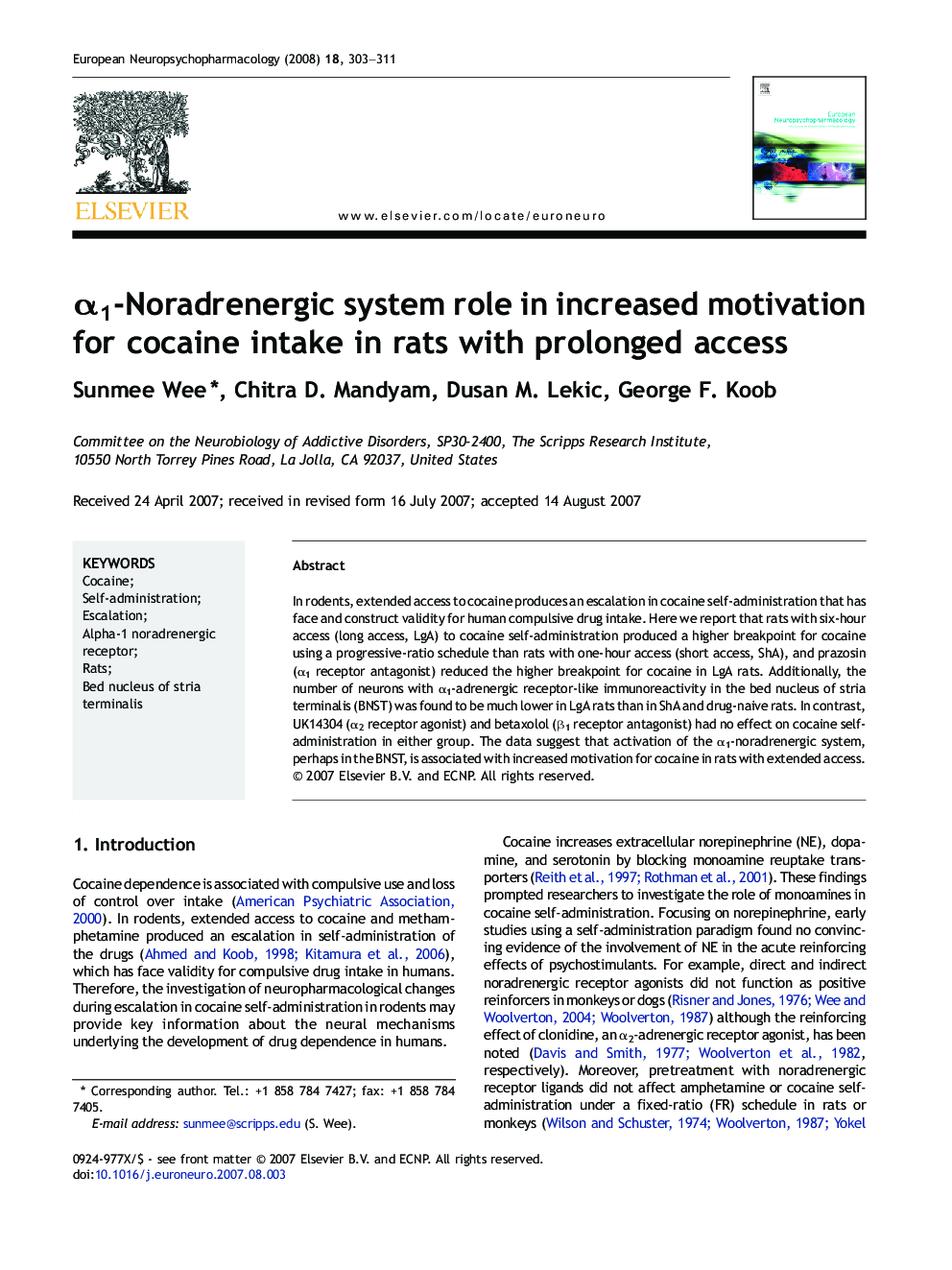| Article ID | Journal | Published Year | Pages | File Type |
|---|---|---|---|---|
| 321350 | European Neuropsychopharmacology | 2008 | 9 Pages |
In rodents, extended access to cocaine produces an escalation in cocaine self-administration that has face and construct validity for human compulsive drug intake. Here we report that rats with six-hour access (long access, LgA) to cocaine self-administration produced a higher breakpoint for cocaine using a progressive-ratio schedule than rats with one-hour access (short access, ShA), and prazosin (α1 receptor antagonist) reduced the higher breakpoint for cocaine in LgA rats. Additionally, the number of neurons with α1-adrenergic receptor-like immunoreactivity in the bed nucleus of stria terminalis (BNST) was found to be much lower in LgA rats than in ShA and drug-naive rats. In contrast, UK14304 (α2 receptor agonist) and betaxolol (β1 receptor antagonist) had no effect on cocaine self-administration in either group. The data suggest that activation of the α1-noradrenergic system, perhaps in the BNST, is associated with increased motivation for cocaine in rats with extended access.
